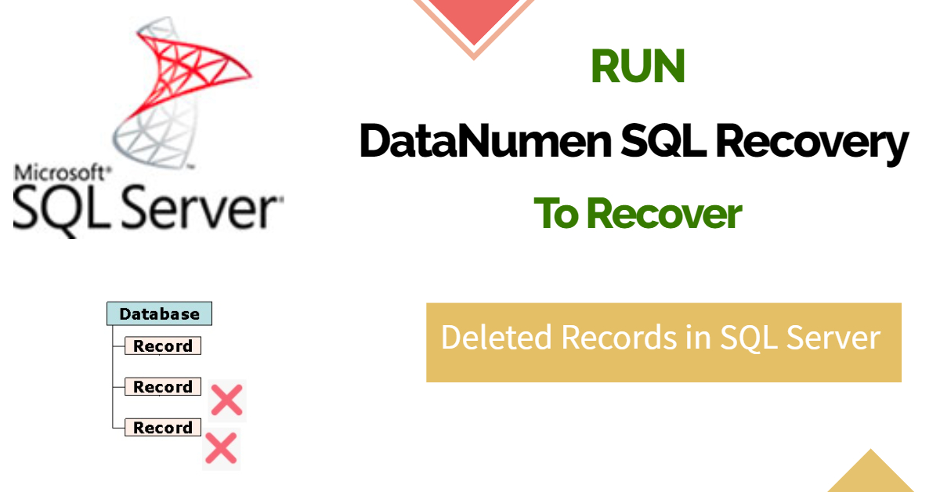
At times while working on the SQL Server application, you may accidentally delete some database records. In this article, we look at using the sophisticated DataNumen SQL Recovery application to recover the deleted records.

The SQL Server application is without doubt one of the most popular database applications in use today across both enterprises and midsize businesses alike. In fact, many small businesses also tend to use SQL Server, especially if they are moving up the ladder from an MS Access solution. However, working on managing SQL Server database solutions is a highly challenging job. Depending on the number of databases you are running in a given instance, you may need to keep a dedicated team to manage regular upkeep functions. In many organizations, due to excessive workload or error in communication, users can mistakenly delete some records or tables for a database in SQL Server. This can cause serious hassles if those tables or records contained valuable data.
Table of Contents
Limitations of Data Backup
While most SQL Server administrators do regularly backup their SQL data, in many cases the backups are not recent. In some small to midsized firms, the frequency of backups too can be less than optimum. In all such cases, accidental deletion data cannot be recovered from the existing backups. The issue becomes complex if the database was used to support a critical line of the business application. An attempt to recover the deleted records is the best course of action.
Recover Deleted Records Effortlessly with the DataNumen SQL Recovery Application
To recover any deleted tables or records from a SQL database you need to launch the DataNumen SQL Recovery application and select the specific MDF file. Next, you can mention the source of the MDF file, say SQL Server 2012, or keep it as auto-determined. You can also choose the path and name of the output MDF file or go with the default name and path kept by the application. Once set just click on the Start Recovery button to initiate the recovery process. You will be immediately greeted by a screen that asks you to input the Server name and you will also be asked for credentials to log-in to the SQL Server application. Once authentication is successful the recovery process will start rolling. A progress bar will showcase the advancement of the recovery process.
Once the recovery process is completed, you can open the output file normally through the SQL Server Management Studio. It is important to note that in the recovered output file the order of deleted records may not be always in exact order. In such a case, just use SQL queries to discover those records. In some cases, deleted tables recovered by the application may get renamed as Recovered_Table 1, Recovered_Table 2 and so forth. In most cases, this efficacious application can bring back your deleted records without losing any data elements in the process.
Organizations Running SQL Server Should Give Get Hold of DataNumen SQL Recovery
If you are running the SQL Server application in your organization, it would make great sense for you to keep the DataNumen SQL Recovery application handy. It can help you deal with several tricky situations like incidents of data corruption, deal with tricky SQL errors and support the extraction objects that were encrypted. Best part, you can get a volume license of this great product for your business at attractive discounts.